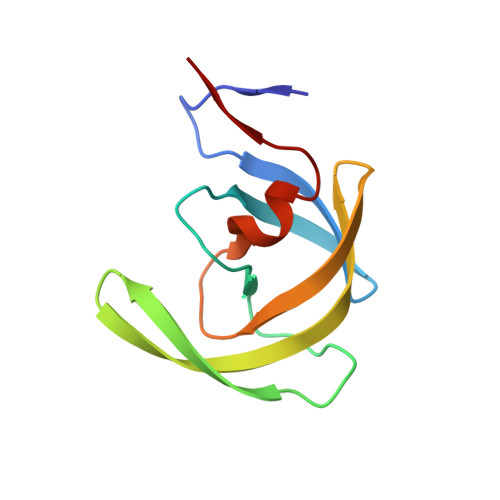Crystallographic Fragment-Based Drug Discovery: Use of a Brominated Fragment Library Targeting HIV Protease.
Tiefenbrunn, T., Forli, S., Happer, M., Gonzalez, A., Tsai, Y., Soltis, M., Elder, J.H., Olson, A.J., Stout, C.D.(2014) Chem Biol Drug Des 83: 141-148
- PubMed: 23998903
- DOI: https://doi.org/10.1111/cbdd.12227
- Primary Citation of Related Structures:
4K4P, 4K4Q, 4K4R - PubMed Abstract:
A library of 68 brominated fragments was screened against a new crystal form of inhibited HIV-1 protease in order to probe surface sites in soaking experiments. Often, fragments are weak binders with partial occupancy, resulting in weak, difficult-to-fit electron density. The use of a brominated fragment library addresses this challenge, as bromine can be located unequivocally via anomalous scattering. Data collection was carried out in an automated fashion using AutoDrug at SSRL. Novel hits were identified in the known surface sites: 3-bromo-2,6-dimethoxybenzoic acid (Br6) in the flap site and 1-bromo-2-naphthoic acid (Br27) in the exosite, expanding the chemistry of known fragments for development of higher affinity potential allosteric inhibitors. At the same time, mapping the binding sites of a number of weaker binding Br-fragments provides further insight into the nature of these surface pockets.
Organizational Affiliation:
Department of Integrative Computational and Structural Biology, TSRI, 10550 N. Torrey Pines Rd., La Jolla, CA, USA.



















